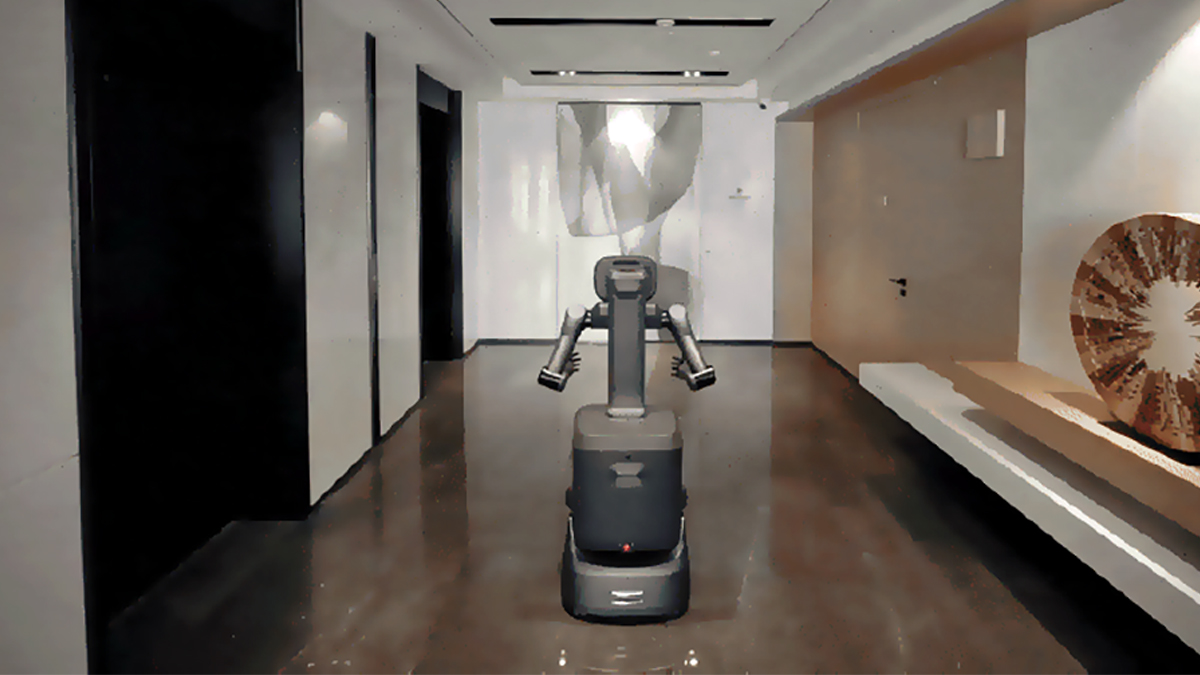With the continuous advancement of science and technology, intelligent service robots are gradually entering our daily lives. Whether in homes, hospitals, hotels or shopping malls, service robots are becoming more and more common. Among the core technologies of these robots, wheel hub motors, as an emerging driving method, are playing an indispensable role. This article will explore the application of wheel hub motors in embodied intelligent service robots and the advantages they bring.
Basic concept of wheel hub motor
The wheel hub motor is an electric drive system that integrates the motor directly into the wheel hub. Compared with traditional motors and transmission systems, the wheel hub motor has the advantages of compact structure, light weight and high efficiency. Its design enables the robot to better control the power distribution when moving, improving the stability and flexibility of driving.
Improved mobility
In service robots, mobility is one of their core functions. The application of wheel hub motors enables robots to achieve more efficient movement. Since the wheel hub motors are directly mounted on the wheels, the complexity of the transmission system is reduced, and the robot can move flexibly in a small space and adapt to various environments. This is especially important for service robots that need to work in complex scenarios such as homes and hospitals.
For example, in hospitals, service robots need to navigate narrow corridors and crowded wards. The high flexibility of wheel hub motors enables robots to easily cope with these challenges and quickly and safely complete tasks such as delivering medicines and meals.
Improve energy efficiency and battery life
The high efficiency of wheel hub motors makes service robots more energy efficient. Traditional electric motors need to use a complex transmission system to achieve power transmission, which not only increases energy loss but may also cause mechanical failure. The direct drive method of wheel hub motors greatly reduces energy loss and improves overall energy efficiency.
In practical applications, service robots often need to work for long periods of time, so endurance is crucial. The high efficiency of wheel hub motors enables robots to work longer with the same battery capacity, improving the practicality of service robots.
Enhanced intelligent control
The application of wheel hub motors also provides more possibilities for intelligent control of service robots. Since wheel hub motors can independently control the speed and direction of each wheel, robots can achieve more complex movement modes, such as rotating in place and moving sideways. This flexibility enables service robots to be more precise when performing tasks and improves work efficiency.
For example, in a hotel service robot, the wheel hub motor can enable it to move freely in a crowded lobby and avoid collisions with guests. At the same time, the robot can adjust its motion strategy in real time according to environmental changes to ensure smooth service.
Future Outlook
With the continuous development of artificial intelligence and robotics, the application prospects of wheel hub motors in service robots are broad. In the future, as the technology matures further, wheel hub motors may be combined with more intelligent sensors and algorithms to achieve a higher level of autonomous navigation and intelligent decision-making.
In addition, as people’s demand for intelligent service robots continues to increase, the application of hub motors will not only be limited to the home and commercial fields, but may also expand to more industries, such as agriculture, logistics, etc. Through continuous innovation, hub motors will bring more possibilities to service robots and promote the development of the entire industry.
Conclusion
As an advanced driving technology, wheel hub motors are injecting new vitality into the development of embodied intelligent service robots. Its advantages in improving mobility, improving energy efficiency, and enhancing intelligent control enable service robots to better meet people’s needs. With the continuous advancement of technology, the application prospects of wheel hub motors will be broader, and future service robots will be more intelligent and efficient, bringing more convenience to our lives.
Post time: Jun-10-2025


